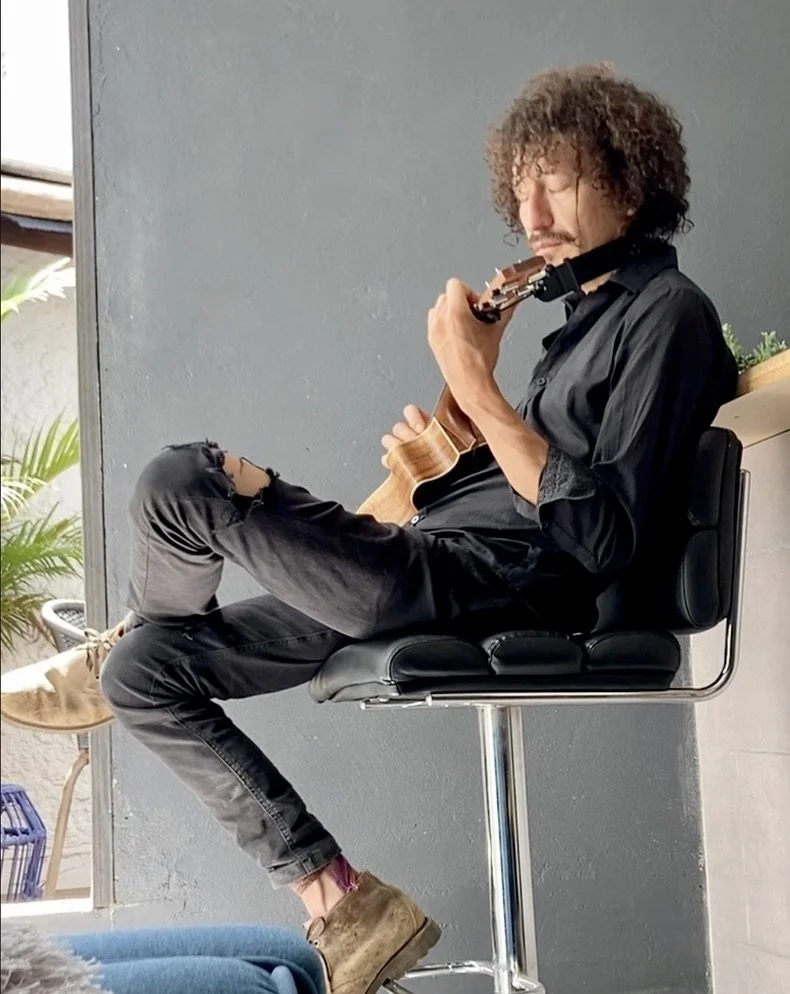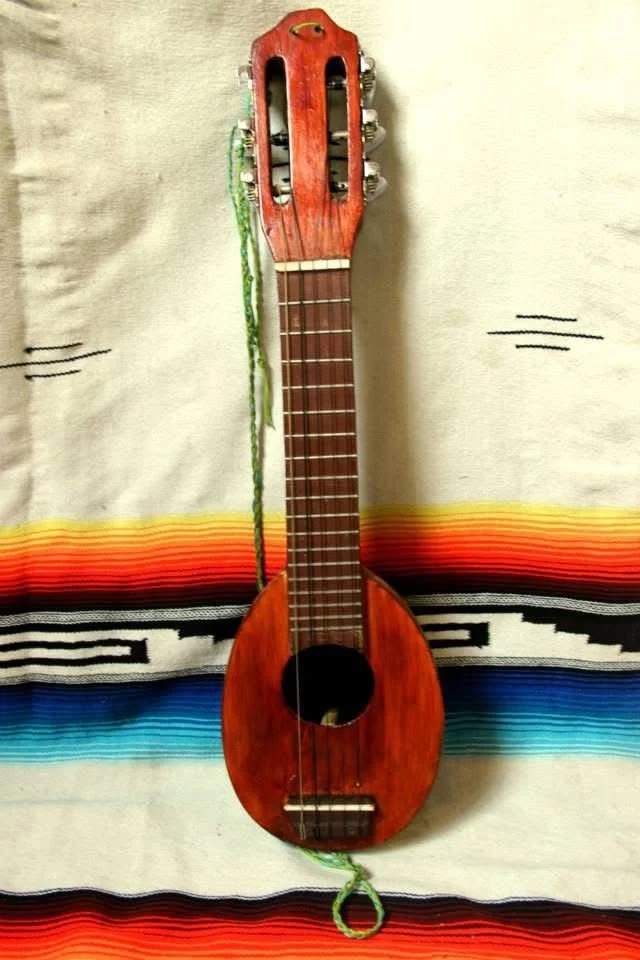Julian Cañas
Sinchi.
Julian Esteban Cañas Enciso, known as Sinchi, was born in Medellín on October 8, 1983. After losing his father at a young age, his family was forced to become self-reliant—a formative experience that instilled in him both resilience and a hunger for guidance. That search for connection led him to woodwork at just 13, marking the beginning of a lifelong relationship with craftsmanship.
In 2000, he co-founded the musical group Reyes Verdes with his close friend Juan Fernando Muñoz Ortega—a creative endeavor that continues to thrive more than two decades later.
Driven by insatiable curiosity and an irreverent spirit, Sinchi entered the University of Antioquia in 2001 to study Pharmaceutical Chemistry. Over the next 15 years, he roamed freely through academia, exploring Education, Engineering, Visual Arts, Philosophy, and finally the Conservatory in 2012—always chasing the intersection of science, art, and soul.
That same year, a pivotal encounter with composer Juan Domingo Córdoba sparked a new path. Together, they explored experimental methods for reading musical scores, igniting Sinchi’s deep dive into composition, instrument-making, and sonic experimentation.
In 2015, he handcrafted his first indigenous charango from totumo, an act that shifted the course of his life. Inspired by the intimacy of shaping sound with his hands, he left his bioengineering studies behind to pursue the creation of musical instruments full-time.
During the pandemic, Sinchi crossed paths with master luthier and composer Obdulio Velásquez, who welcomed him as an apprentice. In a rare gesture of trust, Velásquez passed down the knowledge of three generations of string instrument craftsmanship—an honored tradition the Velásquez family has upheld since 1960.
Today.
Sinchi’i lives with his wife Lillian Moore, son Phido and two step sons Luca and Kaeton. In the mountains outside of Antioquia. His workshop over looks the (name of the valley and many of the tone woods he uses are sourced locally. He spends his spare time playing pickleball and making music.
An Unforgetable Encounter
1990 — I was enrolled in first grade at the Uruguay School in the Francisco Antonio Zea neighborhood of Medellín. I remember the walk to get there—just a few blocks—and how much I loved the view of the school’s courtyard. To reach it from my house, I had to walk around La María Hospital, a tuberculosis treatment center. As a boy, I used to sneak into it to steal sample jars from the clinic.
At the main gate, I’d cross a busy street and continue straight until reaching a sand lot, which actually served as a parking area and smoking zone. I’d cut across it diagonally. I can still remember how the path worn by people’s steps had shaped the sand over time. From there, the walk was a straight shot down the block, ending at the school perched on the edge of a steep drop, protected only by a long chain-link fence.
Right at the corner where the hospital turns—just three blocks from my house—there was a carpentry workshop. I remember the lathe vividly, the curls of wood shavings I’d ask to take to my grandmother’s chicken coops (and then have to clean), the sacks full of oddly shaped wood scraps that my Uncle Alberto would throw over his shoulder. My mother would use them as firewood for the stove.
But most of all, I remember the smell of the wood, the feeling of it in my hands, the sound of the tools. I fell so deeply in love with that place that I stopped going to school. I don’t remember how they found out, but I do know I had to repeat the school year because of my absences.
This memory is deeply important to me. I was only 7 years old when I first set foot in a woodworking shop and discovered wood. Ever since then, I’ve loved its texture, its nobility, and its adaptability.

